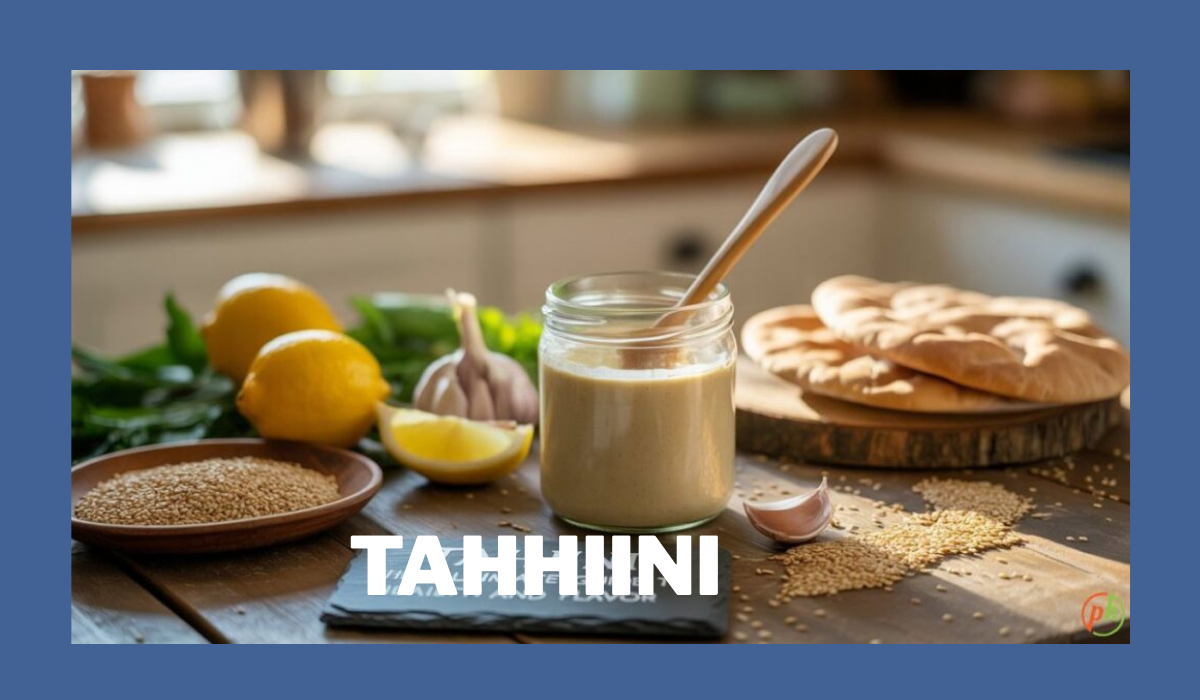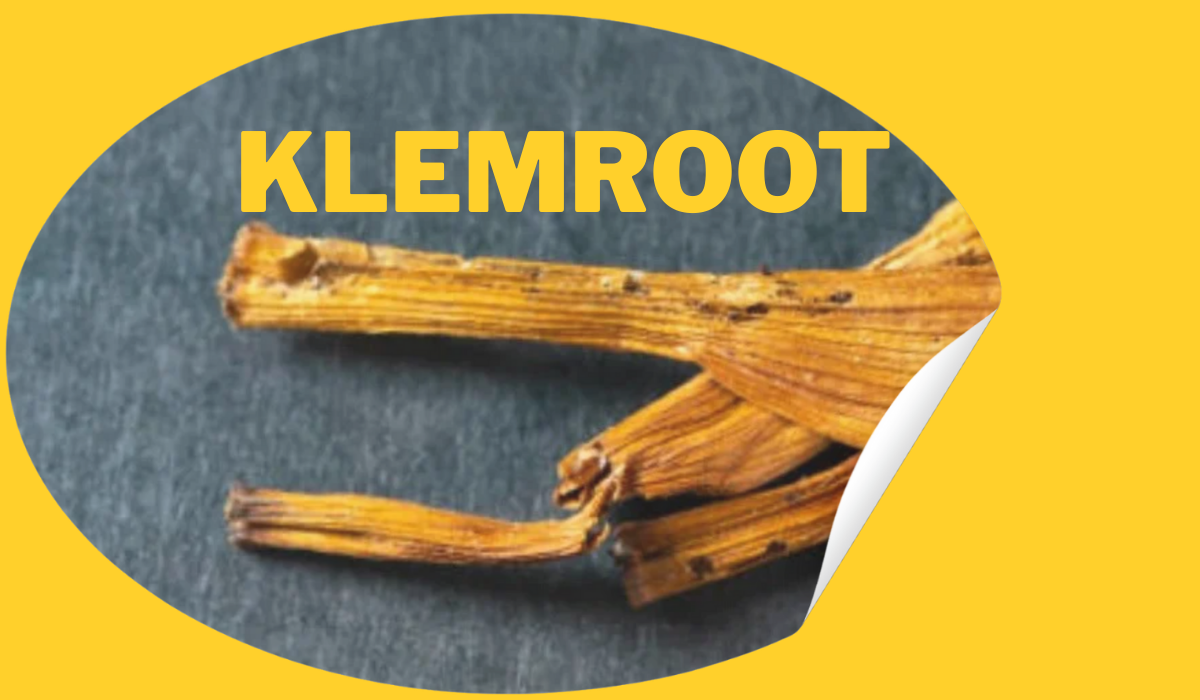Tahini might look like an unassuming jar of paste on the grocery shelf, but this Middle Eastern staple deserves a prime spot in your pantry. Made from ground sesame seeds, tahini brings a rich, nutty flavor and impressive nutritional profile to both sweet and savory dishes. Whether you’ve encountered it in your favorite hummus or spotted it in trendy dessert recipes, tahini offers far more versatility than most people realize.
This creamy paste has sustained communities across the Mediterranean and Middle East for thousands of years. Its unique combination of healthy fats, plant-based protein, and essential minerals makes it both delicious and nutritious. From traditional dishes like baba ghanoush to modern innovations in smoothie bowls and salad dressings, tahini bridges the gap between ancient wisdom and contemporary cooking.
Understanding tahini opens up a world of culinary possibilities. This comprehensive guide will walk you through everything you need to know about selecting, storing, and using this remarkable ingredient. You’ll discover why tahini has become a favorite among health-conscious cooks and how to make it work beautifully in your own kitchen.
The Ancient History of Tahini
Tahini’s story begins over 4,000 years ago in ancient Mesopotamia and Persia, where sesame seeds were first cultivated and transformed into paste. Archaeological evidence suggests that ancient civilizations recognized sesame seeds as a valuable source of nutrition and energy, often incorporating them into both daily meals and ceremonial foods.
The word “tahini” derives from the Arabic “ţahīnah,” which simply means “to grind.” This linguistic root reflects the fundamental simplicity of the product—sesame seeds ground to perfection. As trade routes expanded across the Mediterranean, North Africa, and the Middle East, tahini spread throughout these regions, becoming deeply embedded in local food traditions.
Different cultures developed their own relationships with tahini. In Greece, it became essential for traditional sweets like halva. Turkish cuisine embraced it as a base for both savory mezze and desserts. Throughout the Levant, tahini evolved into the backbone of beloved dishes like hummus and baba ghanoush. Each region contributed its own techniques and preferences, creating the rich tapestry of tahini traditions we see today.
Modern global interest in Middle Eastern cuisine has introduced tahini to kitchens worldwide. Health food enthusiasts have particularly embraced it as a nutrient-dense alternative to other spreads and sauces. This ancient ingredient continues to evolve, finding new expressions in contemporary cooking while maintaining its traditional roots.
How Tahini Is Made: From Seed to Paste
Creating high-quality tahini requires careful attention to each step of the production process. The journey begins with sesame seed selection, where producers choose between hulled and unhulled varieties. Hulled seeds, with their outer shell removed, create a smoother, lighter-colored tahini with a milder flavor. Unhulled seeds retain their shells, resulting in a darker, more robust paste with additional fiber and minerals.
The first crucial step involves cleaning and sorting the sesame seeds to remove any debris or damaged seeds. Quality producers take extra care during this stage, as even small impurities can affect the final product’s taste and texture. Some manufacturers also wash the seeds to ensure maximum cleanliness before processing.
Roasting represents the most critical phase in tahini production. Seeds are typically roasted at carefully controlled temperatures to develop their characteristic nutty flavor without burning. Light roasting preserves more of the seeds’ natural oils and creates a milder taste, while darker roasting intensifies the flavor but can introduce slight bitterness if taken too far. Master producers adjust roasting time and temperature based on factors like seed variety, moisture content, and desired flavor profile.
After cooling, the roasted seeds enter the grinding phase. Traditional stone mills create the smoothest texture by gradually breaking down the seeds and releasing their natural oils. Modern commercial production often uses steel mills, which can process larger quantities but may generate heat that affects flavor. The grinding process can take anywhere from several minutes to over an hour, depending on the desired consistency and equipment used.
The final product should flow smoothly when warm but maintain a thick, spreadable consistency at room temperature. High-quality tahini contains only sesame seeds—no added oils, emulsifiers, or preservatives. The natural oils from the sesame seeds provide all the moisture and binding needed to create the characteristic creamy texture.
Nutritional Powerhouse: The Health Benefits of Tahini
Tahini stands out as one of the most nutritionally dense spreads available, packed with essential nutrients that support overall health. A single tablespoon provides approximately 120 calories, primarily from healthy unsaturated fats that help maintain cardiovascular health. These monounsaturated and polyunsaturated fats can help reduce harmful cholesterol levels when used to replace saturated fats in the diet.
The protein content in tahini is particularly impressive for a plant-based source. Two tablespoons contain about 5 grams of complete protein, including all essential amino acids. This makes tahini an excellent option for vegetarians, vegans, and anyone looking to diversify their protein sources. The protein in tahini helps support muscle maintenance, wound healing, and immune function.
Tahini’s mineral profile reads like a multivitamin label. It provides significant amounts of calcium, with two tablespoons containing roughly 130 milligrams—about 13% of the daily recommended intake. This calcium comes in a highly bioavailable form, meaning your body can easily absorb and use it for bone health and muscle function. Magnesium, another abundant mineral in tahini, supports over 300 enzymatic reactions in the body and helps maintain normal heart rhythm and blood pressure.
The copper content in tahini deserves special mention, as two tablespoons provide nearly 30% of the daily recommended amount. Copper plays crucial roles in iron absorption, collagen production, and maintaining healthy immune function. Tahini also contains meaningful amounts of manganese, which supports bone development and wound healing, and zinc, essential for immune function and protein synthesis.
Antioxidants in tahini help protect cells from oxidative damage. Sesame seeds contain lignans, particularly sesamin and sesamolin, which have been studied for their potential anti-inflammatory and heart-protective properties. These compounds may help reduce oxidative stress and support cardiovascular health when consumed as part of a balanced diet.
The fiber content, while modest at about 1.5 grams per two tablespoons, still contributes to digestive health and helps slow the absorption of sugars, leading to more stable blood glucose levels. This combination of protein, healthy fats, and fiber makes tahini particularly satisfying and helps promote feelings of fullness.
Culinary Versatility: Using Tahini in the Kitchen
Tahini’s remarkable versatility makes it valuable in both traditional Middle Eastern cooking and modern fusion cuisine. Its rich, nutty flavor and creamy texture work beautifully in sweet and savory applications, often serving as both a main ingredient and a flavor enhancer.
In savory cooking, tahini shines as a sauce base. Mixed with lemon juice, garlic, and water, it creates an incredibly smooth and flavorful dressing perfect for salads, roasted vegetables, or grain bowls. The key to perfect tahini sauce lies in gradually whisking in liquid—the mixture may initially seize up and look broken, but continued whisking with small amounts of water creates a silky, pourable consistency.
Marinades benefit tremendously from tahini’s richness. Combined with ingredients like soy sauce, ginger, and rice vinegar, tahini creates complex marinades for chicken, fish, or tofu. The natural oils in tahini help tenderize proteins while infusing them with deep, nutty flavors. For vegetarian proteins like tempeh or mushrooms, tahini marinades add substantial richness and umami depth.
Traditional Middle Eastern cuisine showcases tahini in numerous classic preparations. Beyond the famous hummus and baba ghanoush, tahini appears in dishes like fatteh (a layered dish with pita, yogurt, and various toppings), muhammara (a spicy red pepper and walnut spread), and countless mezze preparations. Each dish demonstrates different aspects of tahini’s personality—sometimes taking center stage, other times providing subtle background richness.
Sweet applications reveal tahini’s surprising dessert potential. In halva, the traditional Middle Eastern confection, tahini combines with sugar syrup to create a unique candy with a distinctive, slightly crumbly texture. Modern pastry chefs have embraced tahini in cookies, cakes, and ice creams, where it provides depth and complexity that plain vanilla or chocolate cannot match.
Breakfast and snack applications continue to expand tahini’s reach. Stirred into oatmeal or yogurt, it adds protein and richness that helps maintain energy levels throughout the morning. Tahini toast has become increasingly popular, topped with everything from sliced bananas and honey to za’atar and olive oil. The combination of healthy fats and protein makes these applications particularly satisfying and nutritious.
Essential Tahini Recipes to Try
Classic Hummus
This traditional recipe showcases tahini’s role as the secret to truly exceptional hummus. Combine 1 can of drained chickpeas, ¼ cup fresh lemon juice, ¼ cup tahini, 1 small garlic clove, and 2 tablespoons extra-virgin olive oil in a food processor. Process until creamy, adding cold water gradually until you achieve your preferred consistency. Season with salt and serve with a drizzle of olive oil and a sprinkle of paprika.
Baba Ghanoush
Begin by roasting 2 large eggplants directly over a gas flame or under the broiler until the skin is charred and the flesh is completely soft. Peel away the charred skin and drain the flesh in a colander for 30 minutes. Mash the eggplant with 3 tablespoons tahini, 2 tablespoons fresh lemon juice, 2 minced garlic cloves, and salt to taste. The result should be creamy but retain some texture. Garnish with olive oil, pomegranate seeds, and fresh parsley.
Tahini Caesar Dressing
This modern twist on the classic dressing eliminates eggs and anchovies while maintaining the characteristic richness. Whisk together ⅓ cup tahini, 3 tablespoons lemon juice, 2 tablespoons olive oil, 2 minced garlic cloves, 1 tablespoon Dijon mustard, and 2 tablespoons grated Parmesan cheese. Thin with water to your preferred consistency and season with salt and pepper. This dressing works beautifully on traditional Caesar salads or as a dip for raw vegetables.
Tahini Chocolate Chip Cookies
These cookies demonstrate tahini’s potential in dessert applications. Cream together ½ cup tahini, ½ cup brown sugar, and ¼ cup granulated sugar until fluffy. Beat in 1 egg and 1 teaspoon vanilla extract. In a separate bowl, whisk together 1¼ cups flour, ½ teaspoon baking soda, and ½ teaspoon salt. Combine wet and dry ingredients, fold in ¾ cup chocolate chips, and drop onto lined baking sheets. Bake at 350°F for 10-12 minutes until edges are lightly golden.
Understanding Tahini Variations
The tahini market offers several distinct types, each with unique characteristics that suit different culinary applications. Understanding these variations helps you choose the right product for your specific needs and preferences.
Hulled versus unhulled tahini represents the primary distinction you’ll encounter. Hulled tahini, made from sesame seeds with their outer shells removed, offers a smoother texture and milder flavor that works well in delicate applications like desserts or light dressings. The lighter color and more neutral taste make hulled tahini particularly versatile for recipes where you want sesame flavor without overwhelming other ingredients.
Unhulled tahini retains the seeds’ outer shells, creating a more robust flavor profile and darker appearance. This variety contains higher levels of fiber, calcium, and other minerals concentrated in the seed shells. The texture tends to be slightly grittier, and the flavor more intense and earthy. Unhulled tahini works exceptionally well in traditional Middle Eastern dishes where its stronger personality can shine.
Raw versus roasted tahini offers another important distinction. Raw tahini, made from unroasted sesame seeds, has a very mild, almost neutral flavor that some prefer for smoothies, raw desserts, or applications where they want tahini’s nutritional benefits without pronounced sesame taste. However, most people find roasted tahini’s developed flavor much more appealing and versatile.
The degree of roasting creates subtle but meaningful differences between products. Lightly roasted tahini maintains more of the seeds’ natural sweetness and delicate flavor, while darker roasted versions develop deeper, more complex flavors with hints of toasted nuts and even slight caramel notes. Some artisanal producers offer multiple roasting levels, allowing you to choose based on your specific preferences.
Organic versus conventional tahini primarily concerns production methods rather than flavor, though organic products often come from producers who pay closer attention to seed quality and processing methods. Stone-ground versus steel-ground tahini can also affect texture and flavor development, with stone-ground often producing smoother results and potentially better flavor development due to lower processing temperatures.
Buying Guide: Selecting Quality Tahini
Choosing high-quality tahini requires attention to several key factors that significantly impact both flavor and nutritional value. The ingredient list should be remarkably simple—ideally containing only sesame seeds. Avoid products with added oils, stabilizers, or preservatives, as these indicate lower-quality production methods and can affect both taste and nutritional profile.
Color provides important clues about tahini quality and type. High-quality hulled tahini should display a creamy, light beige color, while unhulled varieties will be noticeably darker and more brownish. Avoid tahini that appears overly dark unless you specifically want a heavily roasted flavor, as this may indicate over-roasting or old, oxidized product.
Texture assessment becomes easier with glass jars, where you can observe the tahini’s consistency. Quality tahini should appear smooth and uniform, without large oil separations or grainy, chunky textures. Some oil separation is natural and actually indicates the absence of artificial emulsifiers, but excessive separation may suggest poor storage conditions or inferior processing.
The aroma of fresh tahini should be pleasant and nutty without any off-odors. If possible, smell the product before purchasing—rancid tahini will have an unpleasant, bitter smell that indicates oxidized oils. This is particularly important for products in clear glass jars that may have been exposed to light for extended periods.
Country of origin can influence quality, with tahini from traditional producing regions like Lebanon, Greece, or Turkey often showing superior processing expertise. However, many domestic producers now create excellent products using imported sesame seeds and traditional techniques. The key is finding producers who prioritize quality over cost-cutting.
Price often reflects quality in tahini, as high-grade sesame seeds and careful processing methods increase production costs. Extremely cheap tahini may indicate inferior seed quality, poor processing, or the addition of less expensive oils. However, the most expensive option isn’t always the best—focus on the factors mentioned above rather than price alone.
Packaging considerations include light protection and freshness dating. Dark glass jars or opaque containers protect tahini from light-induced oxidation better than clear containers. Check expiration dates and choose products with the longest remaining shelf life, especially if you don’t use tahini frequently.
Storage Tips for Maximum Freshness
Proper storage significantly extends tahini’s shelf life and maintains its optimal flavor and nutritional value. Understanding how to store both opened and unopened tahini helps you get the most from your investment in this premium ingredient.
Unopened tahini remains stable at room temperature for extended periods, typically 1-2 years from the production date when stored properly. Keep unopened jars in a cool, dark location away from direct sunlight and heat sources. Pantry storage works perfectly, but avoid areas near stoves, radiators, or sunny windows where temperature fluctuations might accelerate oil oxidation.
Once opened, tahini benefits from refrigeration, though it’s not strictly necessary for food safety. Refrigerated tahini can maintain peak quality for 6-12 months after opening, while room temperature storage reduces this window to 3-6 months. The cold temperature slows oxidation and rancidity development, particularly important for preserving the delicate flavor compounds that make tahini special.
Oil separation represents the most common storage challenge with natural tahini. This separation is completely normal and occurs because quality tahini contains no artificial emulsifiers. Before using separated tahini, stir thoroughly to redistribute the oils evenly throughout the paste. A long knife or chopstick works well for mixing, though this requires patience as the oils reincorporate gradually.
Some people find mixing easier when tahini reaches room temperature, as the oils flow more readily when slightly warm. Remove refrigerated tahini 15-20 minutes before use, or place the jar in warm water to speed the warming process. Avoid microwaving tahini for warming, as this can create hot spots that alter the texture and potentially damage nutritional compounds.
For frequently used tahini, consider storing smaller portions at room temperature while keeping the main supply refrigerated. Transfer a few tablespoons to a small container for daily use, refilling as needed. This approach provides convenient access while protecting the majority of your tahini from repeated temperature changes and air exposure.
Air exposure accelerates tahini oxidation, so minimize the time jars remain open during use. Wipe jar rims clean before replacing lids to ensure proper sealing. If you notice any off-odors, bitter tastes, or unusual color changes, discontinue use as these indicate rancidity development.
Make Tahini Your Kitchen’s Secret Weapon
Tahini’s journey from ancient Middle Eastern staple to modern culinary treasure reflects its remarkable versatility and nutritional value. This humble paste transforms simple ingredients into complex, satisfying dishes while providing essential nutrients that support overall health. Whether you’re drawn to traditional applications like hummus and baba ghanoush or excited to experiment with contemporary creations like tahini ice cream and chocolate chip cookies, this ingredient rewards creative exploration.
The key to tahini success lies in understanding its unique properties and selecting quality products that showcase sesame seeds at their finest. Take time to explore different varieties—hulled versus unhulled, various roasting levels—to discover your personal preferences. Remember that tahini’s thick consistency and intense flavor mean a little goes a long way, making even premium products surprisingly economical.
Start incorporating tahini into your regular cooking routine gradually. Try it as a simple sauce base with lemon juice and garlic, experiment with it in marinades, or add a spoonful to your next smoothie. Each application will deepen your appreciation for tahini’s complexity and inspire new culinary adventures.
Your journey with tahini connects you to thousands of years of culinary tradition while opening doors to modern innovations. This ancient ingredient continues evolving, finding new expressions in contemporary kitchens while maintaining its essential character. Embrace tahini’s potential, and discover how this remarkable paste can elevate your cooking from ordinary to extraordinary.





